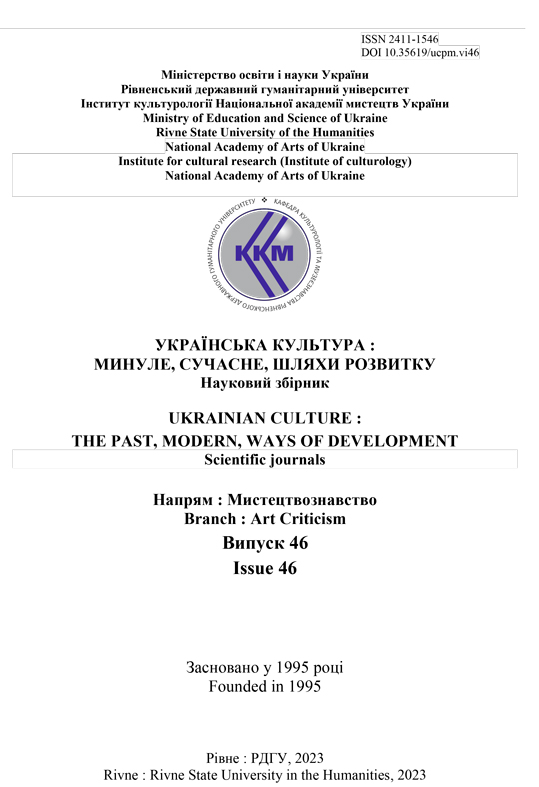ARTISTIC AND STYLISTIC FEATURES ITALIAN FUTURISM IN DESIGN
DOI:
https://doi.org/10.35619/ucpmk.v46i.711Keywords:
design, shaping, environment, furniture, artistic and project activity, futurism, avant-garde art.Abstract
The study aims to highlight the specifics of the development of Italian Futurism in the first third of the twentieth century in the context of material European culture. Without claiming to be comprehensive, the research focuses on the reflection of the artistic trend in the practice of designing the environment of the period. The article highlights the artistic and stylistic features of futurism, which equipped designers with a fundamentally new approach to shaping without unnecessary ornamentation and decor, and at the same time prepared the future consumer of industrial design. The study of the peculiarities of the design of the spatial and object environment of the first third of the twentieth century in relation to the figurative and plastic searches of avant-garde art makes it possible to reveal the universality of the patterns of forming in the design and artistic aspects.
The process of avant-garde artists turning to object creativity in the 1910s and 1930s is presented as a natural outcome of experiments in the field of fine art. The creation of their own compositional systems by avant-garde artists found its further development in design.
Avant-garde art has become an artistic and aesthetic symbol of the last twentieth century, and avant-garde works largely represent the creative face of the twentieth century and indicate its differences from previous eras. The artistic reality of our time allows us to ask whether the avant-garde is becoming a kind of classic art, that is, a completely natural
paradigm of form-making, a component of the systemogenesis of art and culture. To answer this question, we need an integral view of the art of the early twentieth century. The avant-garde movements of the first third of the twentieth century began the search for new means of expression and the intensive development of new compositional techniques.
Simultaneously with the changes in the visual arts, when composition turned into construction, a new language of forms began to emerge in the design of everyday objects such as dishes, clothes, and furniture. That's why the pioneers of design were architects and artists who used the new opportunities in shaping caused by the transition from handicraft to industrial production. They were fascinated by the breadth and complexity of tasks, functional, technological and artistic problems.
The author sees further research into the artistic specificity of avant-garde art experiments and their reflection in design as promising.




